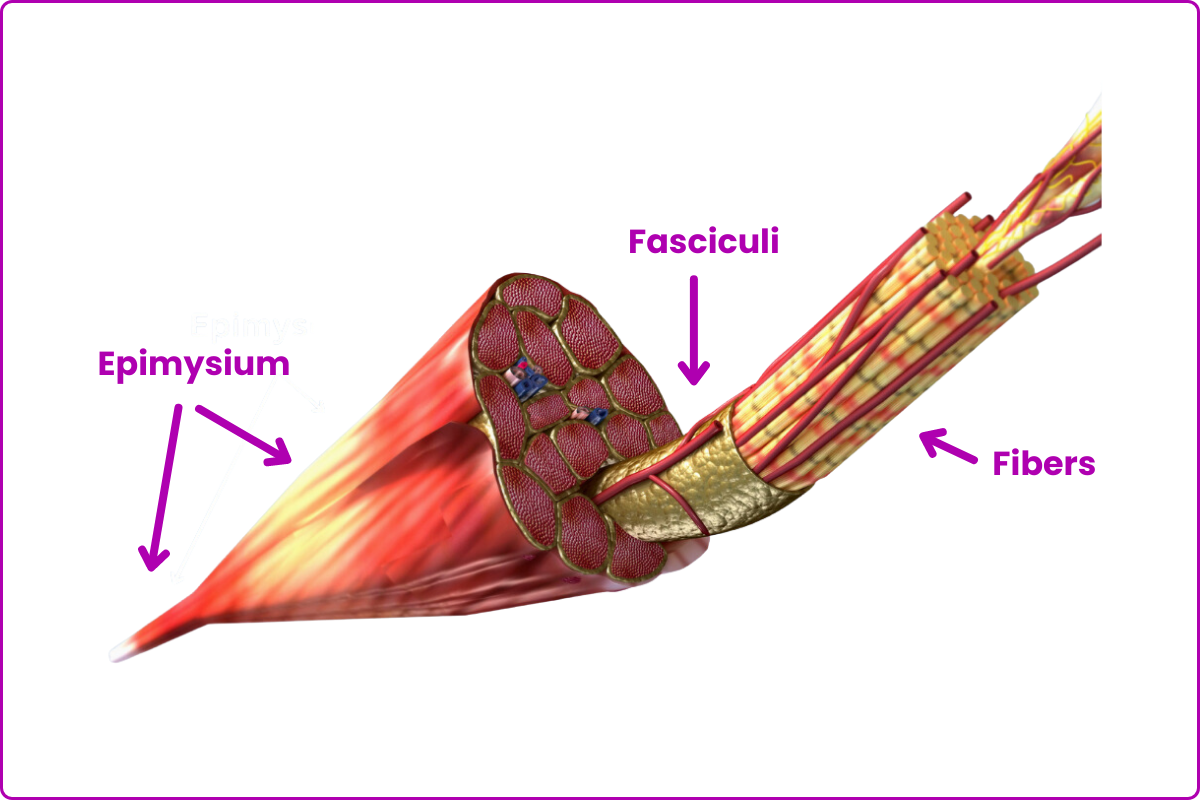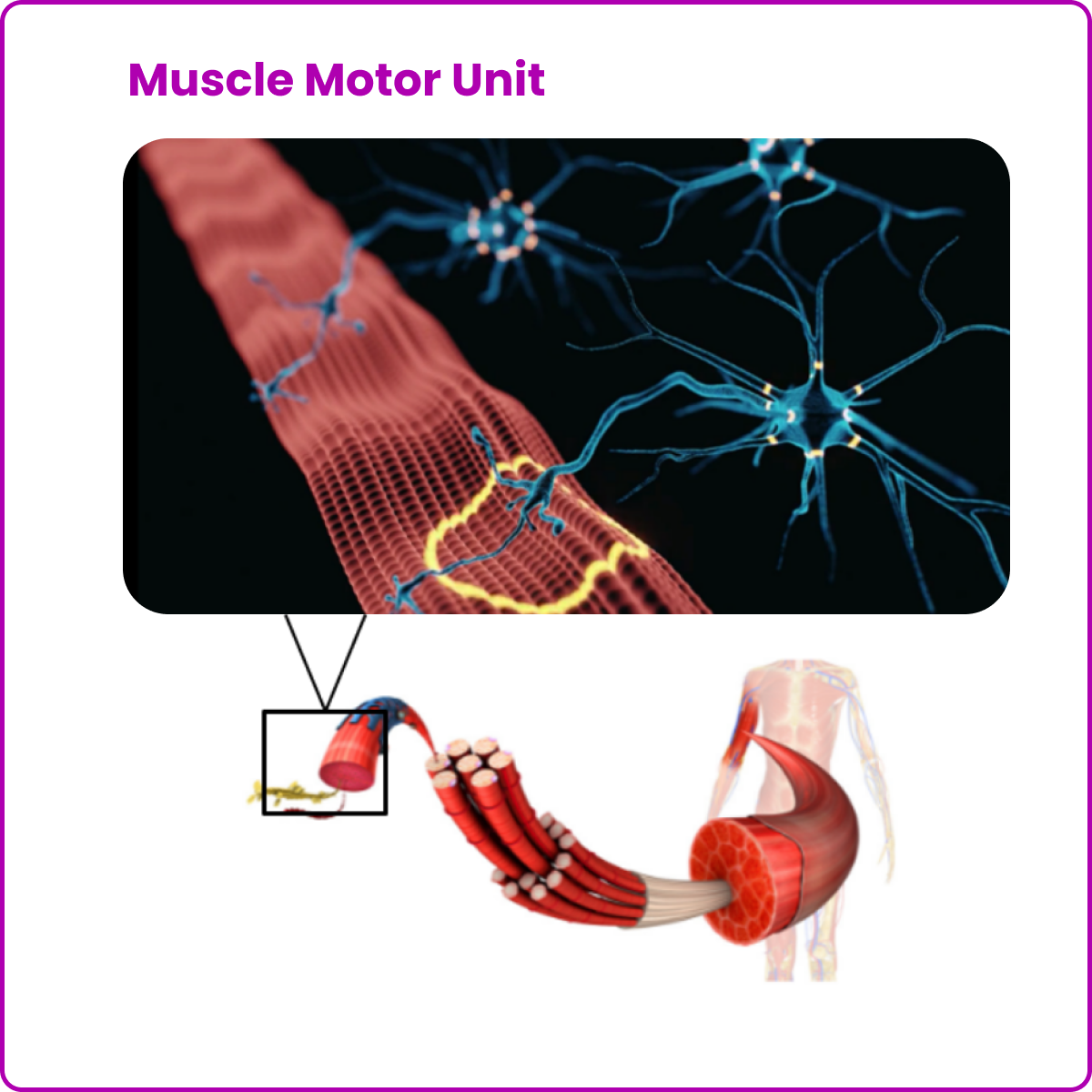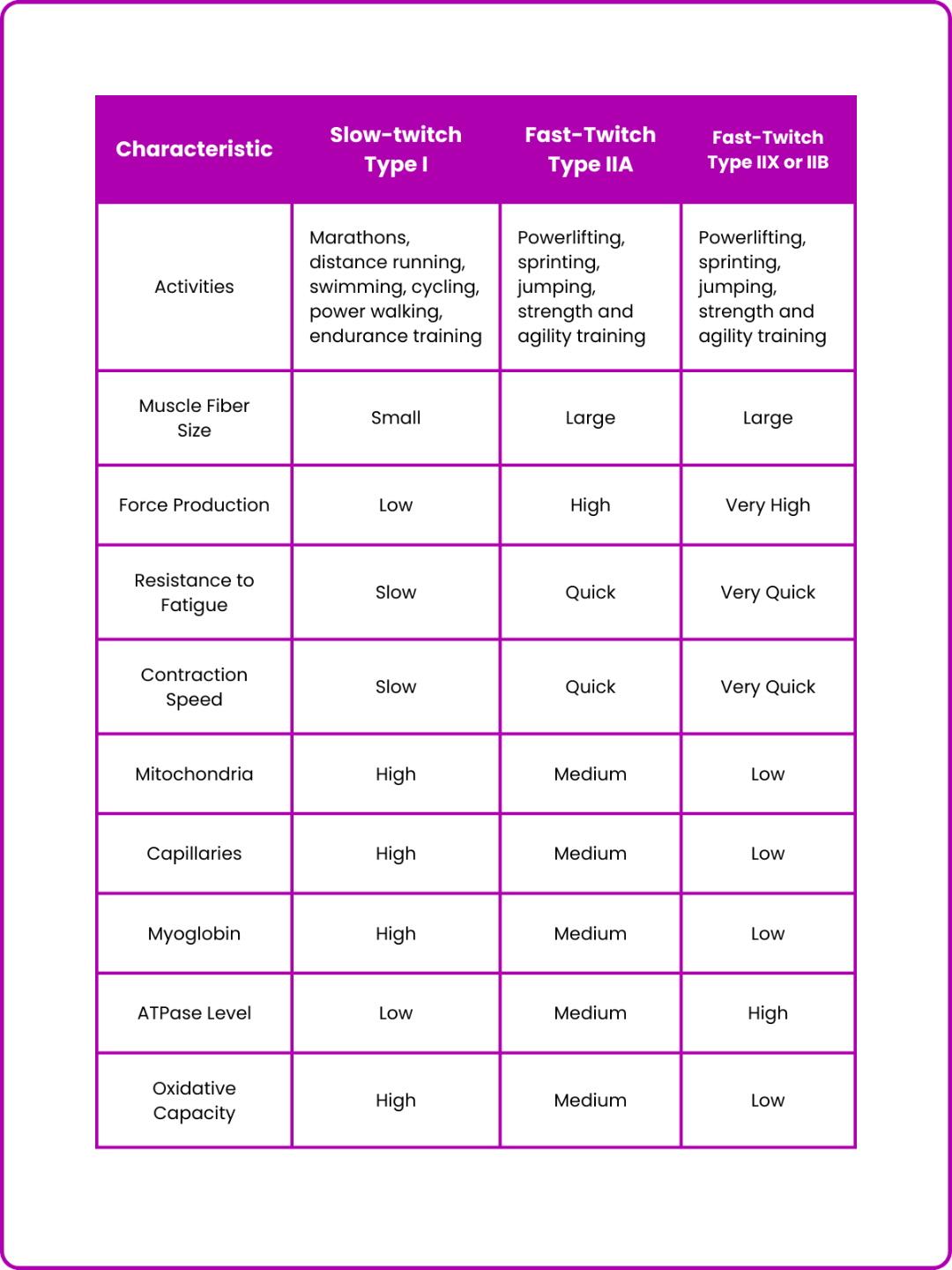A Sneak Peek Inside STRONG
Module Two: The Physiology of Strength Training
Lesson Two - What is Muscle?
Taught by Dr. Carla DiGirolamo
Skeletal muscles contain approximately 75% water, 20% protein, 1–10% fat, and 1% glycogen and make up 30-40% of total body mass. Anatomically, individual muscle cells or fibers are bundled together and surrounded by connective tissue. These bundles of fibers called fasciculi which are further bundled together to form the muscle itself, which is surrounded by another connective tissue layer called the epimysium, which continues to the end of the muscle and forms the ligaments that attach muscle to bone.

Motor Units are the basic unit of functioning muscle. They are composed of a nerve cell and the muscle fiber or fibers that respond to it. Motor neurons carry electrochemical signals to the muscle cells of the motor unit to initiate and coordinate contraction.

Fibers – Muscles are made up of individual muscle fibers and motor units. There are two types of muscle fibers:
- Slow-twitch muscle fibers are fatigue resistant, and focused on sustained, smaller movements and postural control. They are aerobic in nature, meaning, and biochemically best suited to use oxygen for energy compared to fast-twitch fibers. Slow-twitch fibers are also sometimes called type I or red fibers because of their blood supply.
- Fast-twitch muscle fibers provide bigger and more powerful forces, but for shorter durations and tend to fatigue quickly. They are more anaerobic, meaning they use glucose (with the storage form being glycogen) for energy with less blood supply. They are sometimes referred to as white fibers or type II. There are 2 subtypes: type IIx -generate the most force, but fatigue quickly and type IIa which are a mix of type IIx and type I fibers and fatigue more slowly.
Skeletal muscles contain both types of fibers, but the ratios can differ depending on a variety of factors including muscle function, age and training.

Adapted from: https://blog.nasm.org/fitness/fast-twitch-vs-slow-twitch
The proportion of type I and type II muscle fibers can be modified with different types of training:
- Type I muscle fibers can be developed through endurance training, such as low resistance, high repetition, or long duration, low intensity.
- Type II muscle fibers can be developed through strength training.
- Resistance training increases the size of both type I and type II muscle fibers. Greater growth (i.e., hypertrophy) occurs in type II fibers developing the ability to generate force.
- Fast-twitch fibers can also recruit slow-twitch fibers: endurance training at high-intensity intervals can be effective in improving aerobic power.
- De-load or periods of tapering volume and intensity can also improve the strength and power of type II fibers without decreasing type I performance according to one study.

